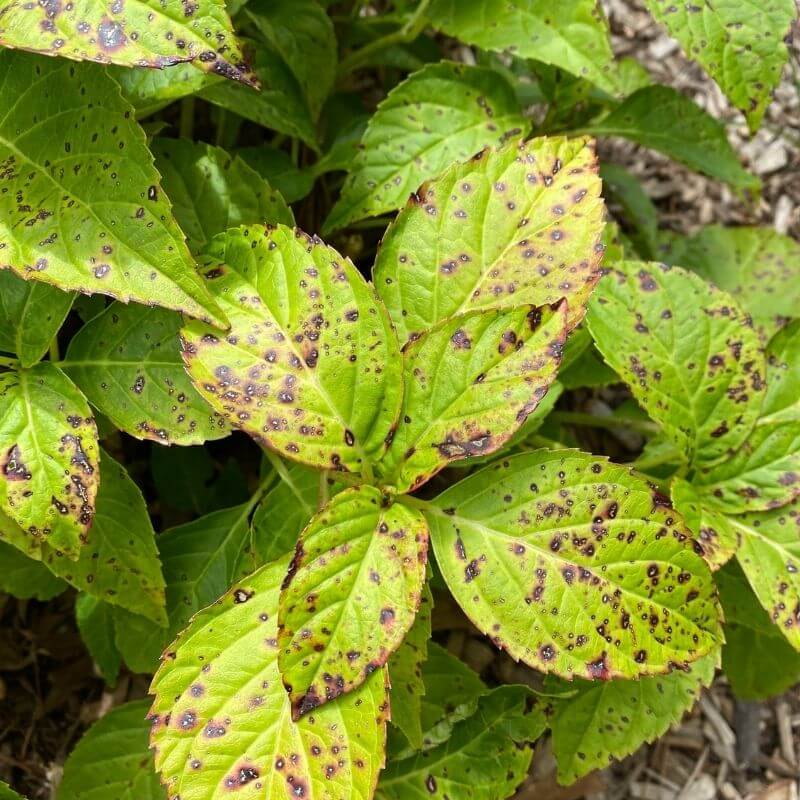The Only Guide to Hydrangea Leaves Turning Yellow
The Only Guide to Hydrangea Leaves Turning Yellow
Blog Article
Hydrangea Leaves Turning Yellow Fundamentals Explained
Table of ContentsThe 3-Minute Rule for Hydrangea Leaves Turning YellowUnknown Facts About Hydrangea Leaves Turning YellowNot known Details About Hydrangea Leaves Turning Yellow An Unbiased View of Hydrangea Leaves Turning YellowThe smart Trick of Hydrangea Leaves Turning Yellow That Nobody is Talking AboutNot known Incorrect Statements About Hydrangea Leaves Turning Yellow
One opportunity is that the plant is not getting adequate sunlight. During the cold weather, the days are shorter, and the sun is not as intense, so make sure to position your Hydrangea in a spot where it will access least six hours of sunshine every day. Another reason for Hydrangea yellow leaves in winter season could be excessive water.Lastly, the fallen leaves may be turning yellow as a result of temperature tension. Hydrangeas like cooler temperature levels, so if the plant is in a place that gets as well hot or as well cool, the fallen leaves will certainly transform yellow. If you believe temperature stress may be the problem, attempt relocating your Hydrangea to a different location or protecting it from the elements with a burlap cover.
New growth will be observed in early spring, when you'll notice environment-friendly vegetation growing from stems that may have shown up dead. Nevertheless, if your leaves are turning brown in springtime or summertime, there are most likely other elements at play. The precise reasons rely on the range and their expanding problems, but in basic, brown hydrangea fallen leaves suggest dehydration and wilting in the warmth
Fascination About Hydrangea Leaves Turning Yellow

Wilting is brought on by lack of moisture, suggesting there are a couple of great tricks to use to avoid this from taking place. Offer your hydrangeas a healthy and balanced glug of water every few days when the temperature levels are climbing high, and deal with the dirt to better preserve wetness. After sprinkling, a dab of mulch around the base of each plant must assist with this by keeping moisture in the dirt.
This interferes with fungis spores from working out. "The Botrytis fungus thrives in awesome and wet conditions, so prevent showering the entire plant when watering and just water at the roots," shares Roy Nicol, a Master Gardener. If you have actually missed the chance for avoidance and are handling an infection you need to eliminate all dead or severely infected leaves from the plant and destroy them to avoid further spread.
5 Easy Facts About Hydrangea Leaves Turning Yellow Explained
As a basic general rule, we advise getting rid of fallen leaves when they are 50% brown or greater. While browning brought on by any type of factor can not be reversed, taking the corrective action explained above will certainly urge the plant to expand new fallen read this post here leaves so the harmed leaves either drop off naturally or can be eliminated by the gardener.
Hydrangeas must be sprinkled you could try this out only when the top few inches of dirt are completely dry, and ought to be given a comprehensive soaking each time. Underwatered hydrangeas are most likely to have yellow, wilting, and drooping leaves.
The method you deal with hydrangea leaves transforming yellow relies on the vital problem creating the yellow fallen leaves. This can be challenging to establish, but once you do you will certainly have the ability to change your plant care accordingly to take care of the problem. As pointed out previously, a common concern with hydrangeas is nutrient deficiencies.
Some Known Facts About Hydrangea Leaves Turning Yellow.
Throughout the height growing season, you must water at a price of regarding 1 inch weekly. If you are stressed over not properly watering your hydrangeas, there are a number of points you can do. Including compost to the base of the plants over the root zone aid to control the temperature around the shrub and retain water in the dirt.
You can buy and mount simple watering globes. Sprinkling globes hold water in them and gradually launch this water into the dirt as the ground becomes completely dry. Simply fill the world with water, stick the spout into the dirt within the root zone near the base of the plant, and leave it in area until all the water is gone.
If it is also severe, some plants will certainly never ever recuperate from transplant shock and will certainly proceed to decrease till they pass away. Decrease transplant shock by including as numerous roots as feasible when excavating up your plant to relocate. Make sure to supply more water than common in the weeks following growing to assist your plant recover and grow new origins.
5 Easy Facts About Hydrangea Leaves Turning Yellow Explained
To stay clear of spreading fungal illness, make certain to thouroughly tidy and sanitize any kind of trimming devices prior to and after usage. You can try to purge the Source origins with water to remove excess fertlizer.
Your hydrangea plant prefers well-drained, wet dirt. If the pot has inadequate water drainage, or your dirt is swamped, the leaves will certainly start to turn yellow.
If you do not water your hydrangea plant for more than a week, the leaves will certainly begin turning yellow. Fungal diseases that attack the plants often tend to reveal signs on the roots and the fallen leaves of the plant.
Hydrangea Leaves Turning Yellow Fundamentals Explained

Report this page